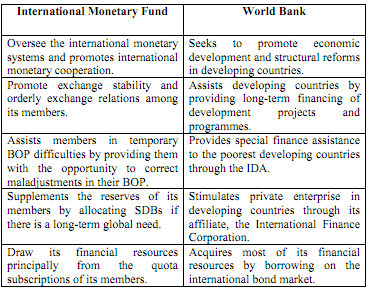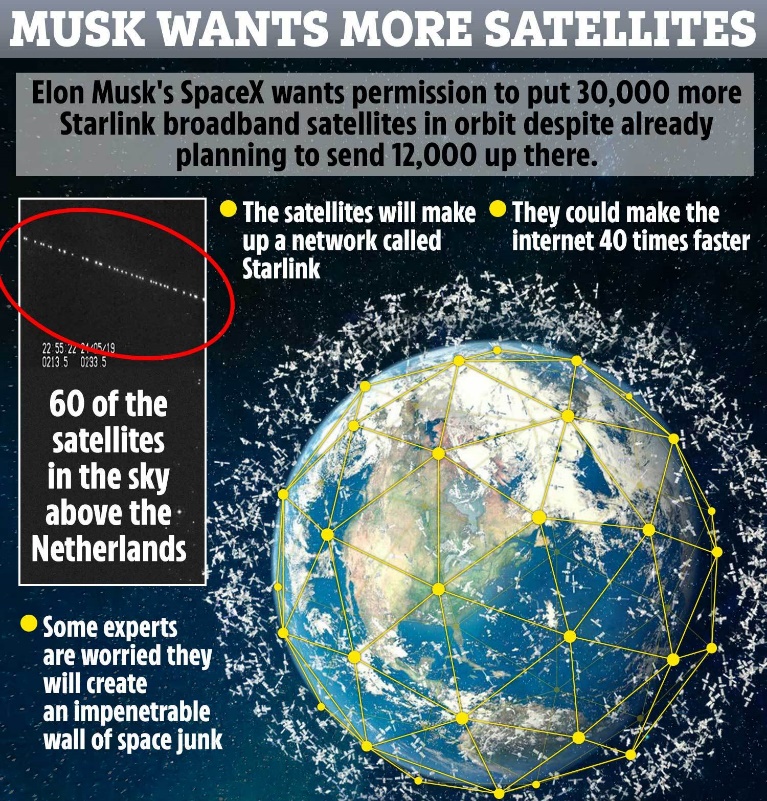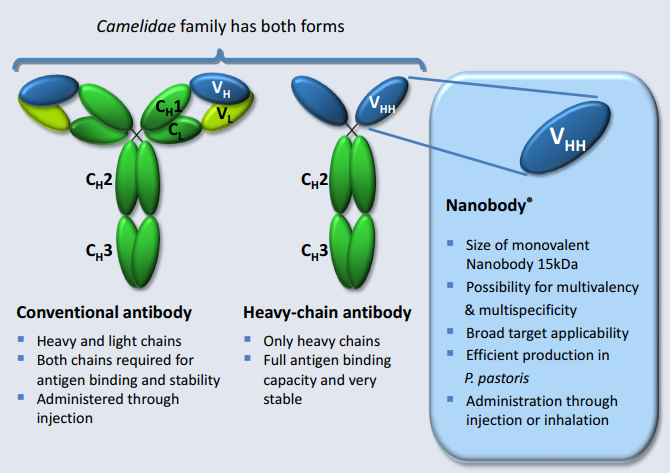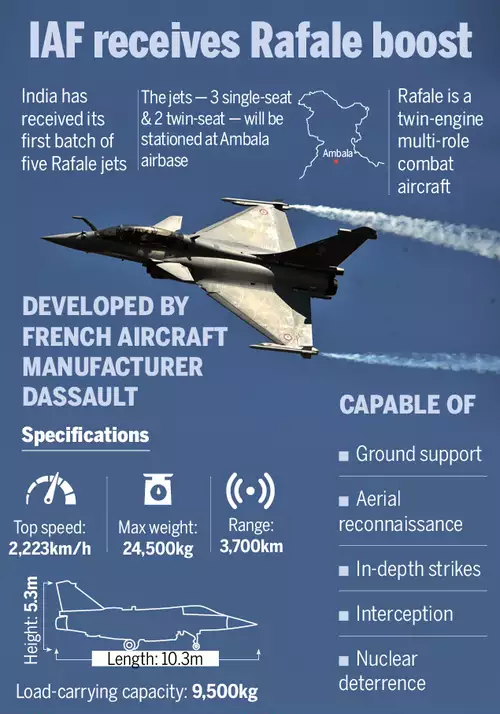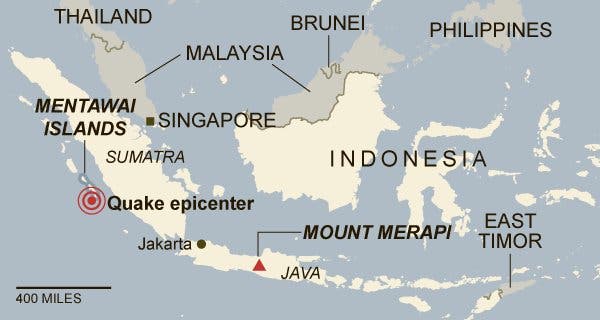The Jan 27th Current Affairs Quiz 2021
Quiz-summary
0 of 10 questions completed
Questions:
- 1
- 2
- 3
- 4
- 5
- 6
- 7
- 8
- 9
- 10
Information
The Jan 27th Current Affairs Quiz 2021
You have already completed the quiz before. Hence you can not start it again.
Quiz is loading...
You must sign in or sign up to start the quiz.
You have to finish following quiz, to start this quiz:
Results
0 of 10 questions answered correctly
Your time:
Time has elapsed
You have reached 0 of 0 points, (0)
Categories
- Not categorized 0%
- 1
- 2
- 3
- 4
- 5
- 6
- 7
- 8
- 9
- 10
- Answered
- Review
- Question 1 of 10
1. Question
Arrange the below places from North to South which were recently in news ?
1. Lipulekh
2. Limpiyadhura
3. KalapaniCorrectAns;- c) 2-3-1
Explanation;-
• The correct answer is C.
About India and Nepal Border Dispute
• For age-old neighbors India and Nepal, the border was formally demarcated for the first time with the Treaty of Sugauli (1816).
• The original treaty drafted by the British East India company called for a “fluid border”. Thus, when the region was delineated, the boundaries were not based on physical landmarks but on rivulets, which have since then considerably changed their courses.
• The current bone of contention Kalapani lies in this ill-defined region.
• This issue returned to the forefront when the Government of India released its revised map of India in November 2019.
• The new map, in addition to the other changes, continued India’s claims to the Kalapani region as a part of the Pithoragarh district in Uttarakhand.
• This publication was swiftly denounced by the Nepali officials. And in 2020, the Nepal government led by K P Sharma Oli introduced a constitutional amendment which made changes to the Nepali map.
• The new map claimed the Kalapani region as a part of the Dharchula district in Nepal.
• The update also claimed the Lipulekh pass and the area of Limpiyadhura for Nepal.
• The tri-junction of Kalapani-Limpiyadhura-Lipulekh carries immense geostrategic significance for India as it serves as a vantage point to keep track of Chinese movements. Thus, the constitutional amendment made by Nepal raised flags for the Indian government and signaled the start of a formal rift in diplomatic relations.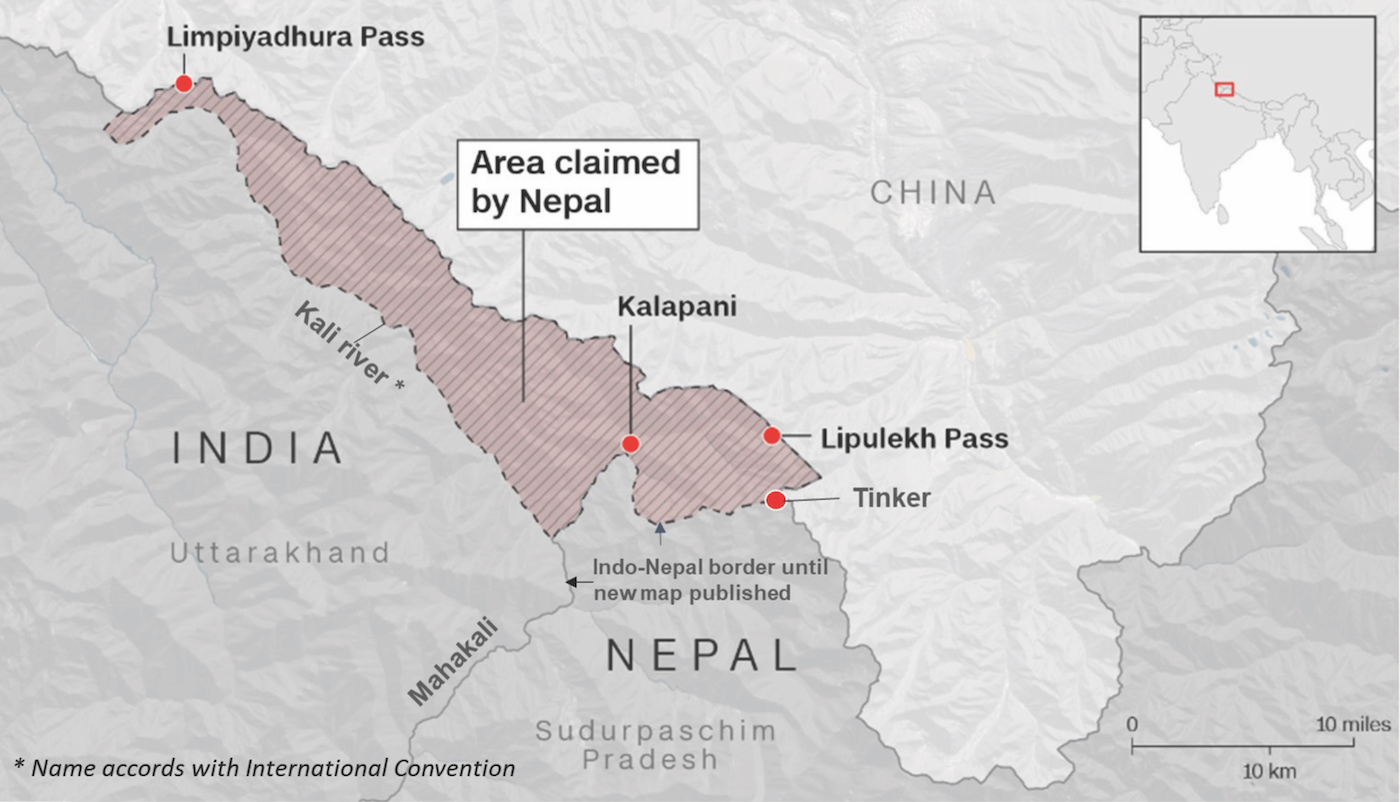 Incorrect
IncorrectAns;- c) 2-3-1
Explanation;-
• The correct answer is C.
About India and Nepal Border Dispute
• For age-old neighbors India and Nepal, the border was formally demarcated for the first time with the Treaty of Sugauli (1816).
• The original treaty drafted by the British East India company called for a “fluid border”. Thus, when the region was delineated, the boundaries were not based on physical landmarks but on rivulets, which have since then considerably changed their courses.
• The current bone of contention Kalapani lies in this ill-defined region.
• This issue returned to the forefront when the Government of India released its revised map of India in November 2019.
• The new map, in addition to the other changes, continued India’s claims to the Kalapani region as a part of the Pithoragarh district in Uttarakhand.
• This publication was swiftly denounced by the Nepali officials. And in 2020, the Nepal government led by K P Sharma Oli introduced a constitutional amendment which made changes to the Nepali map.
• The new map claimed the Kalapani region as a part of the Dharchula district in Nepal.
• The update also claimed the Lipulekh pass and the area of Limpiyadhura for Nepal.
• The tri-junction of Kalapani-Limpiyadhura-Lipulekh carries immense geostrategic significance for India as it serves as a vantage point to keep track of Chinese movements. Thus, the constitutional amendment made by Nepal raised flags for the Indian government and signaled the start of a formal rift in diplomatic relations.
- Question 2 of 10
2. Question
Which of the following statements about International Monetary Fund (IMF) are correct?
1. The IMF provides concessional and non-concessional lending to its member nations.
2. The main function of the IMF is to look after the international monetary system, bring financial stability, encourage world trade, reduce poverty, generate employment and stimulate sustainable growth of the economy.
3. The IMF gives grants to peopleCorrectAns;- a) Only 1 and 2
Explanation;-
• The 3rd statemnet is incorrect because IMF doesn’t give grants to people
• Recently IMF lifts 2021 global growth forecastAbout IMF
• The International Monetary Fund is a Bretton Woods Institution, founded in the year 1944, based in Washington, D.C., USA.
• The IMF is an autonomous body which began its operations in 1947. At its inception, the member countries were only 31 which has been exceeded to 188 countries.
• The fund is a unitary organisation, affiliated with the United Nation Organization (UNO).
• The IMF provides concessional and non-concessional lending to its member nations.
• The main function of the IMF is to look after the international monetary system, bring financial stability, encourage world trade, reduce poverty, generate employment and stimulate sustainable growth of the economy.
• In 2012, the area of operation of the IMF was extended and now, it oversees all the matters relating to macroeconomics and finance.
• The member nations contribute finance to the fund, in a fixed quota which is decided according to their national income and international trade.
• The quota is taken as a base to determine the borrowing rights and voting power of the country. Incorrect
IncorrectAns;- a) Only 1 and 2
Explanation;-
• The 3rd statemnet is incorrect because IMF doesn’t give grants to people
• Recently IMF lifts 2021 global growth forecastAbout IMF
• The International Monetary Fund is a Bretton Woods Institution, founded in the year 1944, based in Washington, D.C., USA.
• The IMF is an autonomous body which began its operations in 1947. At its inception, the member countries were only 31 which has been exceeded to 188 countries.
• The fund is a unitary organisation, affiliated with the United Nation Organization (UNO).
• The IMF provides concessional and non-concessional lending to its member nations.
• The main function of the IMF is to look after the international monetary system, bring financial stability, encourage world trade, reduce poverty, generate employment and stimulate sustainable growth of the economy.
• In 2012, the area of operation of the IMF was extended and now, it oversees all the matters relating to macroeconomics and finance.
• The member nations contribute finance to the fund, in a fixed quota which is decided according to their national income and international trade.
• The quota is taken as a base to determine the borrowing rights and voting power of the country.
- Question 3 of 10
3. Question
Project Kuiper and Starlink sometime seen in the news it is related to which of the following ?
CorrectAns;- c) Space Internet
Explanation;-
• Amazon announced in April 2019 that they would fund and deploy a large broadband satellite internet constellation called “Project Kuiper”.
• Starlink is a satellite internet constellation being constructed by SpaceX providing satellite Internet access. The constellation will consist of thousands of mass-produced small satellites in low Earth orbit, working in combination with ground transceivers.
• Recently World’s richest men, Elon Musk and Jeff Bezos, fight over satellite fleetsAbout Project Kuiper
• Under it, Amazon is planning to put constellation of 3,236 satellites in LEO— including 784 satellites at an altitude of 590 kilometers, 1,296 satellites at 610 kilometers and 1,156 satellites in 630-kilometer orbits.
• The constellation of these satellites will provide low-latency, high-speed broadband connectivity to people globally who lack basic access to broadband internet.
• It will provide data coverage for wide swath spots on Earth ranging in latitude from 56 degrees north to 56 degrees south where about 95% of world’s population lives.
• Jeff Bezos’ rocket company Blue Origin also signed deal with Canada’s Telesat to launch satellites of this constellation.About Starlink
• Starlink is a SpaceX project to build a broadband network with a cluster of orbiting spacecraft that could eventually number thousands.
• The Starlink satellites carry Hall thrusters, which use electricity and krypton gas to generate an impulse, to manoeuvres in orbit, maintain altitude and guide the spacecraft back into the atmosphere at the end of their mission.
• The Starlink network is one of several ongoing efforts to start beaming data signals from space. Incorrect
IncorrectAns;- c) Space Internet
Explanation;-
• Amazon announced in April 2019 that they would fund and deploy a large broadband satellite internet constellation called “Project Kuiper”.
• Starlink is a satellite internet constellation being constructed by SpaceX providing satellite Internet access. The constellation will consist of thousands of mass-produced small satellites in low Earth orbit, working in combination with ground transceivers.
• Recently World’s richest men, Elon Musk and Jeff Bezos, fight over satellite fleetsAbout Project Kuiper
• Under it, Amazon is planning to put constellation of 3,236 satellites in LEO— including 784 satellites at an altitude of 590 kilometers, 1,296 satellites at 610 kilometers and 1,156 satellites in 630-kilometer orbits.
• The constellation of these satellites will provide low-latency, high-speed broadband connectivity to people globally who lack basic access to broadband internet.
• It will provide data coverage for wide swath spots on Earth ranging in latitude from 56 degrees north to 56 degrees south where about 95% of world’s population lives.
• Jeff Bezos’ rocket company Blue Origin also signed deal with Canada’s Telesat to launch satellites of this constellation.About Starlink
• Starlink is a SpaceX project to build a broadband network with a cluster of orbiting spacecraft that could eventually number thousands.
• The Starlink satellites carry Hall thrusters, which use electricity and krypton gas to generate an impulse, to manoeuvres in orbit, maintain altitude and guide the spacecraft back into the atmosphere at the end of their mission.
• The Starlink network is one of several ongoing efforts to start beaming data signals from space.
- Question 4 of 10
4. Question
Which of the following statements about Carbon Sequestration are correct?
1. It occurs both naturally and as a result of anthropogenic activities.
2. It is short-term storage of carbon in plants, soils, geologic formations, and the ocean.
3. Iron fertilization, and injecting CO2 are prominent techniques of ocean carbon sequestrationCorrectAns;- c) Only 1 and 3
Explanation;-
• Carbon sequestration is the long-term storage of carbon in plants, soils, geologic formations, and the ocean, not short term.
About Carbon Sequestration
• Carbon capture and sequestration is the process of capturing waste carbon dioxide (CO2) from large point sources, such as fossil fuel power plants, transporting it to a storage site, and depositing it where it will not enter the atmosphere, normally an underground geological formation.
• Carbon dioxide is naturally captured from the atmosphere through biological, chemical, and physical processes. These changes can be accelerated through changes in land use and agricultural practices, such as converting crop and livestock grazing land into land for non-crop fast-growing plants. Artificial processes have been devised to produce similar effects, including large-scale, artificial capture and sequestration of industrially produced carbon dioxide using subsurface saline aquifers, reservoirs, ocean water, ageing oil fields, or other carbon sinks, bio-energy direct air capture when combined with storage.Advantages
• Planting trees and managing their development is a proven way to reduce the number of harmful particulates in the air. Carbon sequestered is carbon not emitted into the atmosphere. Less carbon in the atmosphere will reduce the greenhouse gas effect and lessen the impacts of climate change.
Disadvantages
• Carbon dioxide may be stored deep underground. At depth, hydrostatic pressure acts to keep it in a liquid state. Reservoir design faults, rock fissures, and tectonic processes may act to release the gas stored into the ocean or atmosphere.
• The use of the technology would add 1–5 cents of cost per kilowatt-hour, according to an estimate made by the panels about climate change. The financial costs of modern coal technology would nearly double if the use of CCS technology were to be required by regulation.
• The cost of CCS technology differs from the different types of capture technologies being used and with the different sites that it is implemented in, but the costs tend to increase with CCS capture implementation. One study conducted predicted that with new technologies these costs could be lowered but would remain slightly higher than prices without CCS technologies.IncorrectAns;- c) Only 1 and 3
Explanation;-
• Carbon sequestration is the long-term storage of carbon in plants, soils, geologic formations, and the ocean, not short term.
About Carbon Sequestration
• Carbon capture and sequestration is the process of capturing waste carbon dioxide (CO2) from large point sources, such as fossil fuel power plants, transporting it to a storage site, and depositing it where it will not enter the atmosphere, normally an underground geological formation.
• Carbon dioxide is naturally captured from the atmosphere through biological, chemical, and physical processes. These changes can be accelerated through changes in land use and agricultural practices, such as converting crop and livestock grazing land into land for non-crop fast-growing plants. Artificial processes have been devised to produce similar effects, including large-scale, artificial capture and sequestration of industrially produced carbon dioxide using subsurface saline aquifers, reservoirs, ocean water, ageing oil fields, or other carbon sinks, bio-energy direct air capture when combined with storage.Advantages
• Planting trees and managing their development is a proven way to reduce the number of harmful particulates in the air. Carbon sequestered is carbon not emitted into the atmosphere. Less carbon in the atmosphere will reduce the greenhouse gas effect and lessen the impacts of climate change.
Disadvantages
• Carbon dioxide may be stored deep underground. At depth, hydrostatic pressure acts to keep it in a liquid state. Reservoir design faults, rock fissures, and tectonic processes may act to release the gas stored into the ocean or atmosphere.
• The use of the technology would add 1–5 cents of cost per kilowatt-hour, according to an estimate made by the panels about climate change. The financial costs of modern coal technology would nearly double if the use of CCS technology were to be required by regulation.
• The cost of CCS technology differs from the different types of capture technologies being used and with the different sites that it is implemented in, but the costs tend to increase with CCS capture implementation. One study conducted predicted that with new technologies these costs could be lowered but would remain slightly higher than prices without CCS technologies. - Question 5 of 10
5. Question
Consider the following statements with respect to Nanobodies are correct?
1. These are antibody fragments, they can be produced by bacteria or yeast, which is less expensive.
2. They are used in clinical therapeutics, immunodiagnostics, and more for environmental monitoring applications.CorrectAns;- c) Both 1 and 2
Explanation;-
About Nanobodies
• Nanobodies are antibody fragments that are so simple that they can be produced by bacteria or yeast, which is less expensive.
• These are antibodies with a single variable domain located on a heavy chain, also known as VHH antibodies.
• These are often seen as an alternative to conventional antibodies, and have significant differences in both production and use that influence their suitability.About Difference between Nanobodies and Conventional Antibodies
• Conventional antibodies have two variable domains, called VH and VL, which offer each other stability and binding specificity.
• Nanobodies have VHH domains and lack VL domains, but are still highly stable
• Thus these are antibodies with a single variable domain located on a heavy chain, also known as VHH antibodies
• Lacking the VL domain also means nano bodies have a hydrophilic (they do not have issues with solubility) side.
• Nanobody production has distinct advantages not available with traditional antibodies, such as improved screening, improved isolation techniques, and no animal sacrifice.
• They are also used as immunoreagent for the analysis of small molecular weight environmental chemicals.
• Recently researchers has developed novel antibody fragments (nanobodies) against SARS-CoV-2. Incorrect
IncorrectAns;- c) Both 1 and 2
Explanation;-
About Nanobodies
• Nanobodies are antibody fragments that are so simple that they can be produced by bacteria or yeast, which is less expensive.
• These are antibodies with a single variable domain located on a heavy chain, also known as VHH antibodies.
• These are often seen as an alternative to conventional antibodies, and have significant differences in both production and use that influence their suitability.About Difference between Nanobodies and Conventional Antibodies
• Conventional antibodies have two variable domains, called VH and VL, which offer each other stability and binding specificity.
• Nanobodies have VHH domains and lack VL domains, but are still highly stable
• Thus these are antibodies with a single variable domain located on a heavy chain, also known as VHH antibodies
• Lacking the VL domain also means nano bodies have a hydrophilic (they do not have issues with solubility) side.
• Nanobody production has distinct advantages not available with traditional antibodies, such as improved screening, improved isolation techniques, and no animal sacrifice.
• They are also used as immunoreagent for the analysis of small molecular weight environmental chemicals.
• Recently researchers has developed novel antibody fragments (nanobodies) against SARS-CoV-2.
- Question 6 of 10
6. Question
Which of the following is the nodal agency for implementing “India’s Arctic Policy”?
CorrectAns;- d) National Centre for Polar and Ocean Research
Explanation;-
About India’s Artic Policy
• India has unveiled a new draft ‘Arctic’ policy that and is committed to expanding scientific research, “sustainable tourism” and mineral oil and gas exploration in the Arctic region.
• The draft policy discusses the importance of understanding the impact of climate change in the Arctic region and its connection with India’s monsoon, which is crucial for its economy.
• India also proposes to focus on vast resources of the Arctic region including hydrocarbons, minerals and renewable power to ensure its energy security.
• The policy is cautious in framing its involvement in the Arctic as “common heritage of mankind” but its priorities are similar to that of other non-Arctic states.
• This policy roadmap draft rides on five pillars:
a) Science and research activities,
b) Economic and human development cooperation,
c) Transportation and connectivity,
d) Governance and international cooperation, and
e) National capacity building.About National Centre for Polar and Ocean Research (NCPOR)
• The National Centre for Polar and Ocean Research, formerly known as the National Centre for Antarctic and Ocean Research is an Indian research and development institution, situated in Vasco da Gama, Goa.
• It is an autonomous Institution of the Department of Ocean Development (DOD), Ministry of Earth Sciences, Government of India which is responsible for administering the Indian Antarctic Programme and maintains the Indian government’s Antarctic research stations, Bharati and Maitri.
• NCPOR was established on 25 May 1998, with Dr. Prem Chand Pandey as its founding director.IncorrectAns;- d) National Centre for Polar and Ocean Research
Explanation;-
About India’s Artic Policy
• India has unveiled a new draft ‘Arctic’ policy that and is committed to expanding scientific research, “sustainable tourism” and mineral oil and gas exploration in the Arctic region.
• The draft policy discusses the importance of understanding the impact of climate change in the Arctic region and its connection with India’s monsoon, which is crucial for its economy.
• India also proposes to focus on vast resources of the Arctic region including hydrocarbons, minerals and renewable power to ensure its energy security.
• The policy is cautious in framing its involvement in the Arctic as “common heritage of mankind” but its priorities are similar to that of other non-Arctic states.
• This policy roadmap draft rides on five pillars:
a) Science and research activities,
b) Economic and human development cooperation,
c) Transportation and connectivity,
d) Governance and international cooperation, and
e) National capacity building.About National Centre for Polar and Ocean Research (NCPOR)
• The National Centre for Polar and Ocean Research, formerly known as the National Centre for Antarctic and Ocean Research is an Indian research and development institution, situated in Vasco da Gama, Goa.
• It is an autonomous Institution of the Department of Ocean Development (DOD), Ministry of Earth Sciences, Government of India which is responsible for administering the Indian Antarctic Programme and maintains the Indian government’s Antarctic research stations, Bharati and Maitri.
• NCPOR was established on 25 May 1998, with Dr. Prem Chand Pandey as its founding director. - Question 7 of 10
7. Question
Which of the folllowing statements about Rafale Jet are correct?
1. The Rafale is a French single-engine and multirole fighter aircraft designed and built by Dassault Aviation .
2. The Rafale has been marketed for export to several countries, and was selected for purchase by the Indian Air Force, the Egyptian Air Force, the Qatar Air Force and the Hellenic Air Force.
3. The Rafale has been used in combat over Afghanistan, Libya, Mali, Iraq and Syria.CorrectAns;- b) Only 2 and 3
Explanation;-
• The 1st statement is incorrect because the Rafale is a French twin-engine and multirole fighter aircraft designed and built by Dassault Aviation not single-engine.
About Rafale
• Introduced in 2001, the Rafale is a French twin-engine and multirole fighter aircraft designed and built by Dassault Aviation being produced for both the French Air Force and for carrier-based operations in the French Navy.
• India has inked a Rs 59,000-crore deal in 2016 to procure 36 Rafale jets from French aerospace major Dassault Aviation after a nearly seven-year exercise to procure 126 Medium Multi-Role Combat Aircraft (MMRCA) for the Indian Air Force did not fructify.
• The MMRCA deal was stalled due to disagreements over production in India.
• In comparison to the earlier deal i.e. MMRCA, Rafale has much technological advancement, lower life cycle cost and specifications according to the warfare needs of India.
• The Rafale has been marketed for export to several countries, and was selected for purchase by the Indian Air Force, the Egyptian Air Force, the Qatar Air Force and the Hellenic Air Force.
• The Rafale has been used in combat over Afghanistan, Libya, Mali, Iraq and Syria. Incorrect
IncorrectAns;- b) Only 2 and 3
Explanation;-
• The 1st statement is incorrect because the Rafale is a French twin-engine and multirole fighter aircraft designed and built by Dassault Aviation not single-engine.
About Rafale
• Introduced in 2001, the Rafale is a French twin-engine and multirole fighter aircraft designed and built by Dassault Aviation being produced for both the French Air Force and for carrier-based operations in the French Navy.
• India has inked a Rs 59,000-crore deal in 2016 to procure 36 Rafale jets from French aerospace major Dassault Aviation after a nearly seven-year exercise to procure 126 Medium Multi-Role Combat Aircraft (MMRCA) for the Indian Air Force did not fructify.
• The MMRCA deal was stalled due to disagreements over production in India.
• In comparison to the earlier deal i.e. MMRCA, Rafale has much technological advancement, lower life cycle cost and specifications according to the warfare needs of India.
• The Rafale has been marketed for export to several countries, and was selected for purchase by the Indian Air Force, the Egyptian Air Force, the Qatar Air Force and the Hellenic Air Force.
• The Rafale has been used in combat over Afghanistan, Libya, Mali, Iraq and Syria.
- Question 8 of 10
8. Question
Which of the following states first in the country to launch “Gender Park”?
CorrectAns;- b) Kerala
Explanation;-
• The Gender Park, established in 2013, is an initiative of the Government of Kerala to work towards gender equality and empowerment in the state.
• It is headquartered in the state’s capital, Thiruvananthapuram. Its main 24-acre campus is set at Silver Hills, Kozhikode (Calicut).
• The launch will coincide with the second edition of the International Conference on Gender Equality (ICGE-II), state Health, Social Justice and Women and Child Development Minister K K Shailaja said on Tuesday.
• The Kerala government’s Rs 300 crore three tower “Gender Park,” claimed to be the first of its kind in the country and working towards gender equality in the state, will become functional here from February.IncorrectAns;- b) Kerala
Explanation;-
• The Gender Park, established in 2013, is an initiative of the Government of Kerala to work towards gender equality and empowerment in the state.
• It is headquartered in the state’s capital, Thiruvananthapuram. Its main 24-acre campus is set at Silver Hills, Kozhikode (Calicut).
• The launch will coincide with the second edition of the International Conference on Gender Equality (ICGE-II), state Health, Social Justice and Women and Child Development Minister K K Shailaja said on Tuesday.
• The Kerala government’s Rs 300 crore three tower “Gender Park,” claimed to be the first of its kind in the country and working towards gender equality in the state, will become functional here from February. - Question 9 of 10
9. Question
Which of the followign definition correctly depicts the terms off-Budget Financing?
CorrectAns;- b) This refers to expenditure that’s not funded through the budget.
Explanation;-
About Off-Budget Financing
• This refers to expenditure that’s not funded through the budget. For example, the government sets up a special purpose vehicle (SPV) to construct a bridge.
• The SPV will likely borrow money to build the bridge on the strength of a government guarantee.
• If it’s not a toll bridge, the SPV will need government support to meet interest obligations.
• So, even though the borrowing and spending is outside the budget, it has implications for the budget and for all practical reasons should be included in that document.
• Since it’s not, this doesn’t reflect on the fiscal deficit number as well.
• Governments across the world use this to escape budget controls.
• Off-budget borrowings are loans that are taken not by the Centre directly, but by another public institution which borrows on the directions of the central government. Such borrowings are used to fulfil the government’s expenditure needs.IncorrectAns;- b) This refers to expenditure that’s not funded through the budget.
Explanation;-
About Off-Budget Financing
• This refers to expenditure that’s not funded through the budget. For example, the government sets up a special purpose vehicle (SPV) to construct a bridge.
• The SPV will likely borrow money to build the bridge on the strength of a government guarantee.
• If it’s not a toll bridge, the SPV will need government support to meet interest obligations.
• So, even though the borrowing and spending is outside the budget, it has implications for the budget and for all practical reasons should be included in that document.
• Since it’s not, this doesn’t reflect on the fiscal deficit number as well.
• Governments across the world use this to escape budget controls.
• Off-budget borrowings are loans that are taken not by the Centre directly, but by another public institution which borrows on the directions of the central government. Such borrowings are used to fulfil the government’s expenditure needs. - Question 10 of 10
10. Question
Recently erupted Mount Merapi is present in which of the following countries?
CorrectAns;- b) Indonesia
Explanation;-
• Mount Merapi, Gunung Merapi, is an active stratovolcano located on the border between Central Java and Special Region of Yogyakarta provinces, Indonesia. It is the most active volcano in Indonesia and has erupted regularly since 1548.
• It is the most active volcano in Indonesia and has erupted regularly since 1548.
• After a large eruption in 2010, the characteristic shape of Mount Merapi was changed.
• On 18 November 2013, Mount Merapi erupted smoke up to 2,000 meters high, one of its first major phreatic eruptions after the 2010 eruption.
• Researchers said that this eruption occurred due to the combined effect of hot volcanic gases and abundant rainfall.
• The most recent eruptions so far were on 3 March 2020, 27 March 2020, and 7 January 2021. Incorrect
IncorrectAns;- b) Indonesia
Explanation;-
• Mount Merapi, Gunung Merapi, is an active stratovolcano located on the border between Central Java and Special Region of Yogyakarta provinces, Indonesia. It is the most active volcano in Indonesia and has erupted regularly since 1548.
• It is the most active volcano in Indonesia and has erupted regularly since 1548.
• After a large eruption in 2010, the characteristic shape of Mount Merapi was changed.
• On 18 November 2013, Mount Merapi erupted smoke up to 2,000 meters high, one of its first major phreatic eruptions after the 2010 eruption.
• Researchers said that this eruption occurred due to the combined effect of hot volcanic gases and abundant rainfall.
• The most recent eruptions so far were on 3 March 2020, 27 March 2020, and 7 January 2021.

